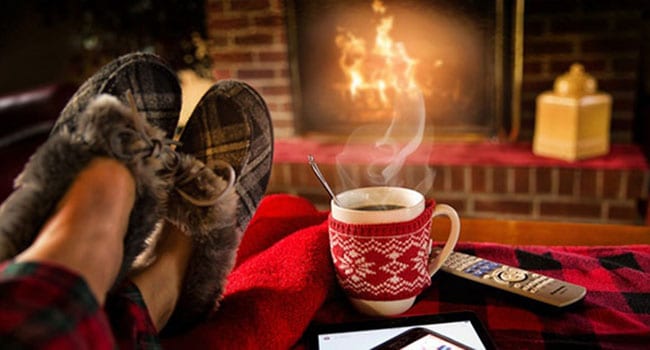 For nine years now three generations of our family have been gathering at Skelhp House – our family home – in the coastal rainforest beside the mostly quiet waters of Jervis Inlet to celebrate Christmas.
For nine years now three generations of our family have been gathering at Skelhp House – our family home – in the coastal rainforest beside the mostly quiet waters of Jervis Inlet to celebrate Christmas.
This time together is the most important we spend as a family each year because it so focused inside the house. This means that everyone eats, plays and celebrates under one roof, and for a few short days the attractions of the outdoors are dimmed by bright Christmas lights and a warming fire that burns around the clock in the granite fireplace.
It is also literally a time when we bring the forest inside by going out en famille to harvest the Christmas tree. Each year a young Douglas fir is cut somewhere on the property and brought home for decoration with family ornaments that date back in some cases nearly 100 years.
My mother is our family matriarch. She is now 94, and no longer enjoys the five- hour odyssey from Vancouver, up the Sunshine Coast highway, featuring not one, but two ferry rides. No problem, however. She’ll fly up by herself on a convenient Pacific Coastal flight from the old South Terminal at Vancouver airport, and arrive full of beans a short 25 minutes later. We’ll dispatch a youthful crew to meet her at the airport and chauffeur her home in the pick- up. She always gets to ride up front in the passenger seat to get a good view and give guidance to the driver.
Her arrival is the signal that Christmas has really begun. She’ll be settled in the master bedroom, evicting my wife and I to our daughter’s loft, thereby evicting her to an air mattress in the library. The rest of the gang live up the road in Toad Hall, our guest house nestled in a grove of Western maples and cedars. All of our Christmas socializing, however, will happen at Skelhp House because it has the only kitchen and dining table.
Most importantly, it was designed by my wife to welcome up to a dozen people for festivities, ranging from eating, drinking, dancing, gifting and even allowing for simultaneous quiet reading and chess games.
It should be noted that Granny will partake in all of these events. And, if so inclined, will also offer her annual smashing impersonation of the Queen’s New Year’s message to the colonies. This too has become a family tradition. “My husband and I …”
The rest of us assume our familiar extended family roles as sons and daughters, aunties and uncles, nieces and nephews, and in some cases as guests. We always invite guests to Christmas dinner, following a family tradition started by Granny’s mother and father in their up-country homes in Revelstoke and Williams Lake. Back in the 1920s and 1930s, Granny remembers that the guests were usually single folk without nearby family. At Christmas dinner they became fictive family for the meal and festivities. We continue that tradition, but have broadened it to include couples who otherwise might miss out on a busier table.
The Christmas dinner, of course, has been preceded by gift giving and various other jollities. Last year these included an impromptu tipping over of the Christmas tree (accompanied by the smashing of several treasured glass ornaments) by me, and a celebrated dining table chair collapse occasioned by my nephew’s quick turn to address a conversation partner to his left. There was a loud crack, and the back of the chair separated from the seat, much to the sitter’s distress. Which soon turned to hilarity as the absurdity of his actions registered on the crowd. Both of these actions have now entered family lore, as in, “Do you remember when Uncle Mike tipped the Christmas tree over?” and “Do you remember the look on Henry’s face when he smashed the antique dining room chair?”
The process of creating the new traditions of Christmas continues year by year. We treasure the existence of the old standbys, just as we welcome the creation of new models of behaviour. Most of all, we welcome the arrival of another Christmas in the country, surrounded by family and friends, in a place of great beauty and kindness. Over time, the cumulative impact of so many memorable Christmases adds to the aura of the house. So much so, that many people when they enter for the first time comment on how happy it feels, and how healing.
Mike Robinson has been CEO of three Canadian NGOs: the Arctic Institute of North America, the Glenbow Museum and the Bill Reid Gallery. Mike has chaired the national boards of Friends of the Earth, the David Suzuki Foundation, and the Canadian Parks and Wilderness Society. In 2004, he became a Member of the Order of Canada.
The views, opinions and positions expressed by columnists and contributors are the author’s alone. They do not inherently or expressly reflect the views, opinions and/or positions of our publication.
